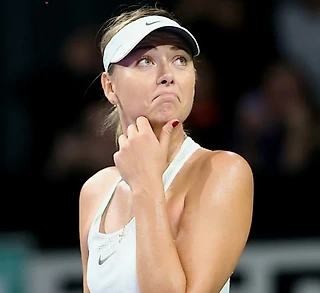Slaves to Surface
Friday, November 29, 2013
by Peter Bodo
The Big Four have achieved great things in recent years and brought the men’s game into what has often been called a “golden age.” But I can’t help but wonder if the era isn’t also less interesting than it might be under other circumstances.
For example, is it a good thing for tennis that Rafael Nadal, Novak Djokovic, Andy Murray, and Roger Federer have so dominated the landscape that the six other members of the Top 10 have a grand total of one Grand Slam title—No. 5 Juan Martin del Potro’s 2009 U.S. Open triumph—and just three Masters 1000 titles among them? (Jo-Wilfried Tsonga, Tomas Berdych, and David Ferrer have each won the Paris Masters.)
Is it a good thing that Tomas Berdych, No. 7 for 2013, didn’t win a single tournament this year? Or that Stanislas Wawrinka is 3-40 against Nadal, Djokovic, and Federer? At what point does thorough domination by an elite group not only become tiresome, but also suggest that the game has been rigged to cater to their talents—fundamental as those talents may be?
It’s an interesting question, and one I’ve been thinking about ever since the Wimbledon final. The Wimbledon women’s final, that is. As awful as that match between Marion Bartoli and Sabine Lisicki turned out to be, it certainly felt like a breath of fresh air. We watched two somewhat familiar yet unexpected talents facing the chance of a lifetime.
This is something we’ve been conditioned not to seek among the men anymore, what with all the hype about the Nadal vs. Federer and then the Nadal vs. Djokovic rivalries. At Wimbledon, the familiarity problem was compounded by the overwhelming (and justified) amount of attention paid to the “will he or won’t he” question hovering over Murray.
Now, with Murray having satisfied the ghost of Fred Perry, sentimentalists around the world, and a few million British subjects, it seems appropriate to ask if it might not be more fun next year to see a Wimbledon final pitting, say, Jerzy Janowicz against Milos Raonic than, say, Nadal against Djokovic.
Wimbledon this year underscored a few things for me, not least of which is that, as much as I enjoy the rivalries at the top of the men’s game, the fall off below the Big Four is becoming a bore. It’s so dramatic and has been proven so predictable that the women’s game as a whole is simply more interesting. I’ve wondered why.
If you happen to be one of those people who doubt that the game has changed all that much in the past decade or two, just consider the role reversal of the two tours. It used to be said that all the women seemed to play the same way, but now it’s the top men who have largely created a template for success. While it’s true that the women are loaded at the top (with Serena Williams, Maria Sharapova, and Victoria Azarenka), they can’t hold a candle to the men in terms of overall superiority. The women have more formidable, proven contenders than do their male counterparts.
Li Na, Agnieszka Radwanska, Petra Kvitova, Sara Errani, Caroline Wozniacki, Jelena Jankovic, Bartoli (who declared for retirement shortly after she won Wimbledon, much to everyone’s surprise), Lisicki, Ana Ivanovic, Sam Stosur, and Svetlana Kuznetsova are all Grand Slam champions or finalists in the WTA Top 25. Counting the Top 3, the WTA fielded 14 proven contenders in the Top 25 in 2013.
Now, let’s compare the men: The top seven men all have played major finals, as has No. 10 Jo-Wilfried Tsonga. But that’s it. Nobody ranked between 11 and 25 has made the breakthrough.
You can put that down to the “golden age.” You can come up with half-baked theories about the WTA having more volatile drama queens and head cases. But you can also look at it another way: The women have so many more dangerous players because they represent a much broader spectrum of playing styles. The difference between Nadal and, say, Berdych simply isn’t nearly as profound as the contrast presented by Serena and Errani. And you can take the comparisons down the line.
But the real 800-pound gorilla in this room isn’t style, per se—it’s the thing that makes stylistic variety and problem solving possible. And that’s surface. The dramatic slowing of the surfaces has imposed a kind of realpolitik on men’s tennis. You need not apply unless you’re a beast with great defense and an aggressive, baseline game. The greatest beneficiary of this has been Djokovic, although Nadal, Murray, Ferrer, and even del Potro have also reaped the rewards.
Those men are tailor-made for the kinds of surfaces that have come to dominate the calendar. You could say that the surface and height-of-bounce issues have created a truly level playing field, and we now have a much more accurate—and fair—standard for judging skill, talent, and fitness. But do we really want that? After all, the challenge to win on different surfaces was always considered a valuable, unique feature that made the game more exciting.
It still does. Except it does so on the WTA tour.
I don’t want to oversell the idea here. It isn’t as if the women are serving-and-volleying like crazy, or radically changing their games to suit the surface. But the reality is that surface has never played the same role in the two branches of the pro game, and that’s been borne out in the results. I’m not even sure that what we mean by “style” isn’t just as much about what the player projects as what tactical choices he or she makes. And in the end it probably doesn’t matter all that much.
The bottom line seems to be that the men are slaves to surface far more than are the women, which is why their game has become more predictable and, perhaps, less interesting.









Вопросы принципиальные, очень важные и касают и мужской, и женский теннис. Думаю будет хорошая дискуссия.
Но для этого необходим перевод.
Очень прошу - переведите пожалуйста! А может быть кто-то уже перевел, но я не знаю. Сообщите, пожалуйста, если Вы знаете.
А напишу мои комментарии, когда перевод будет готов.
Я не хочу переоценивать идею здесь. Это не значит , что женщины отбивают с лета , как сумасшедшие , или радикально меняют свои стиль игры , чтобы удовлетворить поверхность. Но реальность такова, что поверхность никогда не играла ту же роль в двух турах , и это подтвердилось в результатах . Я даже не уверен, что то, что мы подразумеваем под «стилем» не столько то как играет , как то, какие тактические варианты он или она выбирают . И в конце концов это возможно не имеет такого уж большого значения.
Но по сути, кажется, что мужчины являются рабами поверхности гораздо больше, чем женщины , и именно поэтому их игра стала более предсказуемой и , пожалуй, менее интересной .
Переводчик Google для бизнеса
Большая четверка добились многого в последние годы и они принесли в мужскую игру то, что часто называют "золотым веком ". Но я не могу не задаться вопросом, не является ли эпоха менее интересной, чем это могло бы быть при других обстоятельствах.
Например, это хорошо для тенниса , что Рафаэль Надаль, Новак Джокович, Энди Маррей и Роджер Федерер доминируют, но шесть других членов Top 10 имеют в общей сложности один турнир Большого Шлема - 2009 Открытый чемпионат США Хуана Мартина Дель Потро и всего три Masters 1000 на всех? ( Жо-Вилфрид Тсонга , Томаш Бердых и Давид Феррер уже каждый выиграли Париж Masters)
Это хорошо, что Томаш Бердых , № 7 за 2013 год, не выиграла ни одного турнира? Или, что Станислас Вавринка имеет личку 3-40 против Надаля, Джоковича и Федерера? В таком случае доминирование элитной группы не только становится утомительным, но также показывает, что игра была сфальсифицирована, чтобы больше подходить под их манеру игры.
Это интересный вопрос, над которым я думал начиная с финала Уимблдона. Женского финала Уимблдона конечно же. Матч между Марион Бартоли и Сабин Лисицки оказался похож на глоток свежего воздуха. Мы наблюдали два уже достаточно знакомых таланта, несколько неожиданно получивших шанс.
Это из-за того, что мы привыкли не ждать от мужчин большего соперничества, чем Надаль против Федерера или Надаль против Джоковича. На Уимблдоне знакомая проблема разбавилась ( и оправданно ) вниманием к " будет он или не будет он " вопросом, парящим над Мюрреем.
Теперь, когда Мюррей удовлетворил призрак Fred Perry , сентиментальных по всему миру, и несколько миллионов британских подданных, представляется целесообразным спросить, не было бы интереснее увидеть в следующем году в финале Уимблдона скажем, Ежи Яновича против Милоша Раонича, чем скажем, Надаля против Джоковича.
Уимблдон в этом году подчеркнул несколько вещей для меня, не последней из которых является та, что, не смотря на то, что я люблю соперничество в верхней части мужской сетки, все что ниже Большой четверки становится скучным. Это так драматично и настолько предсказуемо , что женская игра в целом просто более интересна. Я задался вопросом, почему.
Если вам посчастливилось быть одним из тех людей , которые сомневаются , что игра изменилась в последнее десятилетие или два, просто рассмотрите смену ролей этих двух туров. Раньше можно было сказать, что все женщины, казалось, играют одинаково, но теперь это стали топ- мужчины, которые в значительной степени создали шаблон для успеха. Хотя это правда, что в верхней части сетка у женщин так же загружена ( Сереной Уильямс, Марией Шараповой и Викторией Азаренка ), мужчины им и в подметки не годятся с точки зрения общего превосходства. У женщин более грозные, проверенные соперники, чем у их коллег-мужчин.
Ли На , Агнешка Радваньска , Петра Квитова , Сара Эррани , Каролин Возняцки , Елена Янкович , Бартоли ( которая завершила карьеру после того как она выиграла Уимблдон , к всеобщему удивлению ) , Лисицки , Ана Иванович , Сэм Стосур и Светлана Кузнецова - все Гранд Slam чемпионы или финалисты в WTA топ-25 . Против Топ-3 WTA выставляет 14 проверенных соперников из топ-25 в 2013 году.
Теперь , давайте сравним мужчин : Лучшие семь все сыграли в важных финалах, как и № 10 Жо-Вилфрид Тсонга . Но вот что важно. Никто из занимающих места с 11 по 25 не сделал прорыв.
Вы можете применить это к “Золотому Веку. ” Вы можете придумать полусырые теории о WTA, в котором наличествуют более изменчивые королевы драмы и люди с психическими расстройствами. Но Вы можете также посмотреть на это иначе: У женщин так много более опасных игроков, потому что у них гораздо более широкий спектр стилей игры . Разница между Надалем и, скажем , Бердыхом просто не так глубока , как отличие представленное между Сереной и Эррани . И вы можете в конечном счете сравнить.
Но настоящая 800 - фунтовая горилла в этой комнате не стиль. Та вещь, которая делает возможным существование проблемы стилистического разнообразия это поверхность. Резкое замедление поверхностей создало такую реальность в мужском теннисе . Вам это не нужно применять , если вы не зверь с сильной защитной и агрессивной , базовой игрой. Наибольшую выгоду от этого получил Джокович , хотя Надаль , Мюррей , Феррер , и даже дель Потро также пожинают свои плоды .
Эти мужчины, сделаны специально для таких видов поверхностей , которые стали доминировать в календаре. Можно сказать, что поверхность и высота отскока создали действительно равные условия , и теперь у нас есть гораздо более точный и справедливый - стандарт для того, чтобы судить о мастерстве, таланте и фитнесе. Но действительно ли мы хотим это? В конце концов, задача выигрывать на различных поверхностях всегда считалась ценной, уникальной особенностью, которая делает игру более интересной.
И это по-прежнему делают. Кроме того делают это в туре WTA .
Я не хочу переоценивать идею здесь. Это не значит , что женщины отбивают с лета , как сумасшедшие , или радикально меняют свои стиль игры , чтобы удовлетворить поверхность. Но реальность такова, что поверхность никогда не играла ту же роль в двух т
И сейчас, совсем в другом тоне про тоже самое: "The women have more formidable, proven contenders than do their male counterparts. Li Na, Agnieszka Radwanska, Petra Kvitova, Sara Errani, Caroline Wozniacki, Jelena Jankovic, Bartoli (who declared for retirement shortly after she won Wimbledon, much to everyone’s surprise), Lisicki, Ana Ivanovic, Sam Stosur, and Svetlana Kuznetsova are all Grand Slam champions or finalists in the WTA Top 25. Counting the Top 3, the WTA fielded 14 proven contenders in the Top 25 in 2013".
Нет желания обсуждать именно его писанину.
Денни, напишите свой пост об этом, его мы и обсудим.
Это слово часто используется в лексиконе дипломатов и политических аналитиков. Это нюанс характерный для текстов Бодо - частое использование слов в переносном смысле и смешивание разных типов лексики.